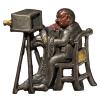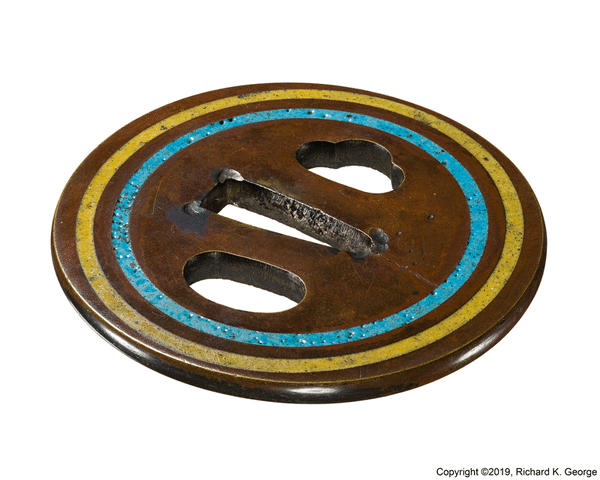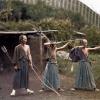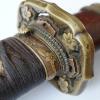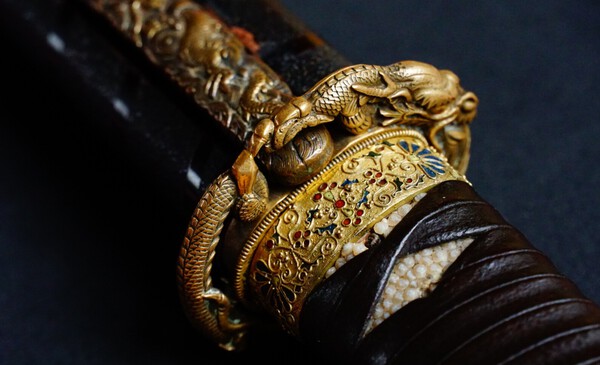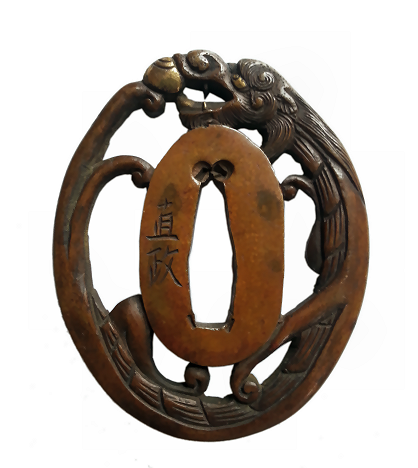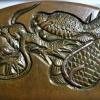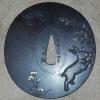Leaderboard
Popular Content
Showing content with the highest reputation on 07/22/2021 in all areas
-
Namesake / Michael My opinion is already in the other thread. I have looked at many Ko-Bizen, own one, etc. This blade is very good BUT you must know what you are buying before venturing into something like that. If you are asking for [moral] support and views on the blade and others justifying to you whether you should buy it, it seems to me you are not ready yet to swim in these [deep] waters… if you truly have such funds, then pause, look around, compare and decide what type of Ko-Bizen (or whether it is Ko-Bizen you desire in the first place) you are after and then by which smith. And then perhaps decide whether you want it with provenance and koshirae or not. Someone buying at such level would need to evaluate the smith, condition, provenance, length, other bells & whistles etc etc. You would need to know what you want / expect of the blade and whether it is meeting your requirements (eg do you like the hamon and want flamboyant choji, or does it need to be an “old blade”, do you want a blade with a mei etc).8 points
-
Well, Michael This background is very helpful: you seem to like old, historic items with proved or provable history / provenance. I am with you personally on Kamakura, even though I venture either side too (Heian and Nanbokucho). Bear in mind that with Kamakura and older, you often have to compromise on condition issues (eg here there are some lamination seam ware on one side of the hamon, which I personally can live with, but some members who prefer younger swords, eg Shinto etc, would not accept). If you are not focused on a certain school or schools and not fixated on how a blade looks like, as long as it is in a good condition, then you could go for any blade that ticks the boxes mentioned above. Personally, I like this Ko-Bizen Tochika a lot, but that is because I like Bizen. What the bonus features here are: the preserved mei, the highly rated provenance and Honami certificate. I shall leave aside the tachi koshirae as it is nice but not super nice. The Honami who appraised it is the highly rated Kojo (big bonus) and the family is an offshoot of the very famous Matsudaira clan (bonus). The sword description in the Juyo paper talks of fabulous choji and excellent deki, so the judges did think rather highly of the sword. As mentioned before, they compare it to Hatakeda (the founder, Moriie, had such glamorous kawazuko choji) and Saburo Kunimune (another Bizen great with expressive hamon). Such comparisons are also a subtle nod to the reader that the blade is from the early 1200s perhaps (they do mention that the blade does not date later than mid Kamakura). The smith himself is not very famous but this blade seems to be one of his tour de force creations. He does not have many blades left to us but those that remain (fewer than ten) have JuBI and JuBu grade items among them and are split between suguha and flamboyant and active hamon. Honma sensei, in his book Kanto Hibisho, speaks favourably of this very sword and compares it to the JuBi and JuBu examples. Fujishiro has also included it in his book. So, clearly this is a famous, well researched and well documented blade that has been reviewed by Honami Kojo, Fujishiro sensei, Honma sensei, the NBTHK shinsa panel, Tanobe sensei (if I were you, I would get his sayagaki of this sword professionally translated by Markus Sesko) etc. Well, it does not get any better than that documentation wise. At this level, you need to trust the dealer as you are not seeing the blade in hand. The photos are all right but sometimes obscure certain details. The oshigata Tsuruta draws for sale are not usually too precise and tend to exaggerate some activities but of course oshigata are works of art and interpretation. So, do allow for some condition issue that might pop up when you get the blade but again I suspect for the age of the blade it will be acceptable. Ask for a video of the sword, ask for daylight photos of the sword, ask for someone you trust to review it in hand if possible. But anyway, with this sword, you get a lot of research done by others in your behalf. Personally, I am surprised that such a caliber sword ended with Tsuruta. But anyhow, do your own research with some of the pointers above and sleep on it.6 points
-
Understanding this... Tokuju papers usually have a period listed right in the setsumei, unlike Juyo. On this one it is very clearly set to middle Kamakura. Their mentioning of Heian is a transcription error or a copy and paste error or two different clerks writing it up. It happens a lot there so you need to be careful. With Ko-Bizen it is kind of a simple error to conflate them with Heian blades, because in the Heian period we classify most things as Ko-Bizen in Bizen. But it needs to be understood as kind of an umbrella under which we place the older Bizen works when we can't clearly define a group to assign them to. So in the Kamakura period if you are an "unaligned" swordsmith that we can't place where you belong, you will fall into the Ko-Bizen classification. In terms of Tochika there may be many generations or just one, there is not enough information to tell and different theories are out there. In these cases the NBTHK can and likes to write about specific pieces, in this case saying that this is a middle Kamakura Tochika while mentioning a theory that he was a son of Masatsune (there are several ways to interpret Masatsune as well in terms of generations and time period). Other times they have mentioned Tsuneto and they have also mentioned that there is a possibility that he is Hatakeda or early Hatakeda somehow. So you kind of can't go wrong by just saying that this one in particular is middle Kamakura and it is certainly authentic and high quality Tochika. But it's really wrong to just pop open Fujishiro and see there is one entry for Tochika and he puts him at the end of Heian so saying that because this is Tochika then it's Heian period. Even the strongest things we can say about dates when we get to middle Kamakura and earlier has to have a big fudge factor of decades to centuries because we literally move back from clearly documented history to poorly documented history to the time of legendary smiths. A lot of that gray area can be dealt with by saying Ko-Bizen or Ko-Kyo and then leaving it as a subject for further research. This it not purely a punt but just the knowledge that swords are still being discovered that can tell us more about what we want to know from the earliest times.5 points
-
Georg, thank you for sharing your journey with us. Similarly to you, we are enjoying the ride and look forward to the end destination. Please do not get discouraged by a few detractions and distractions on the way there.4 points
-
Kurihara Hikosaburo Akihide kitae kore Showa 8 (1934) October 栗原彦三郎昭秀鍛之 昭和八年十月日 tempered for Prime minister Saito Makoto 内閣総理大臣齋藤實 焠之 Looks to be a potentially historically significant blade Any more pics of blade up close?4 points
-
4 points
-
At this level of nihonto, you have so many amazing works to choose from. If this is your first foray into nihonto it would be wise to take a breather and look around more broadly to determine why it is you want this particular blade and not others, lest getting buyer's remorse.3 points
-
I got out some Ainu knives for a presentation at a local museum and thought there might be some interest in them here. I am not sure these are "Japanese" blades but they ARE related. Indeed, I have formed three collections of Ainu objects, but I've given two of them away and formed this bunch only because they were there. Most of the "blades" are Japanese (or other "Asian') cutlery, but please take a look at the bear face bag that was fitted out with a "netsuke' that we collectors see as a very ordinary iron tsuba. Thank you for looking! Peter2 points
-
I thought they were put together with ‘ rice glue ‘ that I thought was made from no other than rice. I think that I even watched a video of how to make it. I am sure someone else will set this straight. Good luck MikeR2 points
-
@Tom Darling, please forgive me in advance if this reply sounds rude for myself not being a native speaker of the English language, but your participations in this thread were sometimes very weird and not very helpful for myself. In post #50 you claimed "The habaki ( -0) is original to the nakago, but not the blade. The three (hi) beyond the machi is also a clue"; to my various inquiries what you supposed to tell me and how a habaki can be original to the nakago but not to the blade and which clue the three hi are for you never gave a reply and left others also wondering what you mean. You later then had suspicion it wouldn't make Juyo since it wasn't directly moved to Juyo but instead Tokubetsu Hozon first. Such assumptions make beginners, as I am, uncertain and require me to check back with more knowledgeable persons, such as Markus, who then assured me your thoughts are wrong and everything is alright with my blade and it does the process as it is supposed to be. Subsequently I had requested better pictures of my blade to have something to share with persons that have helped and assisted me with their thoughts and I was eagerly waiting to get them myself, to finally see something more on the blade. You might be correct in that the pictures as uploaded to the forum are not perfect to make judgements on it - I am surely not the one to be able to tell if this picture is perfect or not. But first of all remember that the forum automatically resizes to pictures of maximum 1800 px width/length, plus during this process which also optimizes pictures filesize-wise as well, hence details may be lost. Next, have I had additional pictures, I would had posted them among too. So no, I don't have a full size blade picture of the other side. I'm keeping this forum updated and sharing what I can since many were very helpful and I love the idea of forums especially when it comes to sharing details and items with persons from all over the world for all to give them access to something they might not have and possibly learn from. Finally, no my blade is not the only one known in this style and shape. Darcy on the first page posted one in exact identical style/shape even with also three hi from Juyo 18. You have participated in this thread with several posts, hence you should be aware of this. Now, I don't want you to answer what you meant with the habaki/nakago post nor discuss again the way to Juyo, but mentioned these two things to maybe give you an outside view on how your postings can be understood/misunderstood by others, especially not knowledgeable persons. Therefore (and also because this way I can at least work around the picture size limitation) find attached a cutout picture of the kissaki area that you had particularily asked upon. To my personal astonishment when comparing the kissaki area with a picture that resulted in cleaning the blade (the particular second picture was posted in this thread on page 3 in post #76) it seems they match pretty well, hamon-wise. @vajo thanks for the hint, I missed to address this earlier. I trust the handling person they will give a freshly polished blade proper treatment though so I don't think as a novice I should tell them how to correctly oil and store the blade. It might also just be a few wooden fibers that were in the way when the pictures were taken.2 points
-
Ran short of time with the photographer and don't have more pics, but I can get some. This one is interesting to me. I've always liked the lines of the kyu gunto.2 points
-
Hello George, Found this online, and thought this could be another reason to have an Orchid on a Tsuba. "By the early 17th century, the orchid flower was a symbol of respect and admiration in Japanese culture. Orchids became so revered in Japan that growing orchids was sometimes considered a noble art form. In particular, dendrobium orchids were grown by Japanese royalty for their fragrance and beauty. Another orchid that has a special place in Japanese culture is the Neofinetia falcata, also known as the wind orchid. These orchids are sometimes popularly called samurai orchids, mainly because samurai were known to grow them as symbols of bravery and peace." Probably just trying to rationalize my western likes....but what the heh. Mark2 points
-
I doubt a person that hasn't had the 'common level' blades ever would even know what they are looking at/understand it/appreciate it/study it. Now if that's the billionaire club, call ALL dealers and ask them to show you what they have in their 'vaults' (as someone suggested that they have MANY for sale available). Then the blade/s will pick you John2 points
-
+1 to Michael's write-up. Even if you are in the /ultra-wealthy/ or on up to the billionaire's club, it is hard to recommend something to someone we don't know. This is not to say "we don't know you", as much as we don't know whether you'd prefer a 1930s Rolls Royce over a modern Mercedes-Maybach. The previous thread that Michael linked covered some of the errors and whatnot of the Aoi Art listing. Nice sword, if you like ko-Bizen. Extremely rare. Is it your cup of tea, or does one of the pristine shinshinto Juyo deliver more pleasure per (Great British) Pound.2 points
-
Crazy.... It is so interesting to me that a sword made at roughly the same time, by the same group of dudes, who used the same source of inspiration, with the same techniques and materials, would be valued so differently. The sword you referenced is 25x more expensive than the one that I bought. Is it nicer? Yeah, I can see that it is a better work, more finely made, probably a special order because of the length, lovely bohi, yeah....Nice. 25 times nicer? I just don't know. Goes to show how little I know and how far I have to go to get up to speed on this subject material. I think that this is where the industrial design component ends, and the art world begins...and brand becomes REALLY important. I wish I had some more reference material on the Ishido school. - - -JT2 points
-
I love the hamon on this one. It's amazing that this sword is roughly 1000 years old! I keep trying to imagine how it looked in all it's original glory freshly made! IMHO it's a little pricey. His prices have gone up quite a bit in the last year or two but he's also added quite a few decent nihonto to his selection. I agree with the above. If you truly have the funds, shop around. Think on it for a bit. Maybe you'll see something else you like better? Either way it's a good long term investment you can hand down to someone you love. Or not😉 Good luck2 points
-
2 points
-
當=当 It means "to hit" (as in, to hit a target), or to win something (election, lottery). The kanji on the left, and the one that is on your sword, is the original version. The kanji on the right is the simplified version that is in use in Japan today. There is no difference in meaning or pronunciation. Just two ways of drawing the same kanji. By itself it is pronounced ataru/atari. (If you are "of a certain age" you remember the video game company Atari. It was said that they took their name from this Japanese word meaning to win/hit). However, when this character is used as part of a compound word, it is pronounced tō. On your sword this character is combined with 一 (ichi) to form a sort of compound word tōichi. Actually it is a name rather than a word, but anyway the pronunciation of the two together (當一) is tōichi. There isn't a great amount of detail on Tōichi/Yasuhiro. None that is readily available to me, anyway. As you may know, swordsmiths and other artisans, scholars, politicians, in feudal Japan often went through many name changes in their lives. They may take on two or three or more different names as they proceed through their career. My guess is that Tōichi was a name he adopted early in his career, and then he dropped it as he began to be recognized (or maybe after the death of Yasuhiro 1st). His name at birth was Toda (or Tomita) Gorōzaemon. The use of the kiku-mon was something only allowed only under license/permission from the central government. It's use was a privilege that had to be awarded. The fact that it doesn't appear on your sword, plus the use of Tōichi in the name, makes me think your sword was made early in his career. Tō is indeed a homonym for sword (tō), but this is just a coincidence. Japanese is full of homonyms.2 points
-
One needs to be very careful with Aoi and its listings. Usually there are some inadvertent mistakes but also there is the usual dealer spin to reality. Firstly, as Kirill is saying, Ko-Bizen spans from Heian / roughly 1100 to approximately 1240. Plus or minus a decade or two. So, you have occasionally Ko-Bizen which are well into Kamakura and have different dimensions (increasing sori in monouchi) and hamon (more flamboyant) to the ‘usual’, old Ko-Bizen, which on the whole tended to be more uncontrived than here. So, this type of nioiguchi and hamon speak of later Ko-Bizen as a rule. Next, onto the smith. Well, this smith is believed to be a descendant of Masatsune, who did have a more flamboyant hamon. Interestingly, the setsumei here references flamboyance similar to Hatakeda Moriie and Saburo Kunimune, who would have overlapped with Tochika, at least partially, in creative period. Fujishiro in his book starts by saying that he is usually associated with 1190 as starting period, then quotes several eras but concludes the smith most likely worked during the Ichimonji school period. There are not many swords left by him and some are in suguha but some are very flamboyant and exciting. He has blades which were kokuho pre-war and now JuBu, so clearly highly rated. As to the blade, yes it is TokuJu and published by Fujishiro. The Honami Kojo origami is highly valuable and it has a historic provenance. The hamon is very nice, it is zaimei , so these are the positive attributes. One will need to evaluate whether one is happy with the condition (it has some rather deep ware). But it surely is a special sword, valued very highly. It shows that the overall merits far outweigh the condition issues.2 points
-
A friend of mine with an extensive collection of militaria, much of it WWI and WWII, has passed away. I agreed to help the family identify and find homes for his collection, that they didn't even know existed. For years I've been helping him sell sabers, bayonets, uniforms, etc. I have photos of two swords that appear traditional, though I doubt either are significantly valuable. I'll post one at a time so there's time for clear discussion. I also have several for the military forum, both forged and stamped. This tachi appears to be relatively recent, and the shinogi ji appears to my eye to have been buffed.1 point
-
Aoi did another diabolical job on the description. This time, the transcription of the sayagaki in Japanese is ridiculous, and the English translation is no better. To summarize, Tanobe-sensei's sayagaki states that while most old sources name Tōchika as the son of Tsunetō (placing him at the tail end of the Heian period), this sword has the traits of a mid-Kamakura sword.1 point
-
That's not even a real Ka-Bar. To be fair, it may have been made in Japan in the 1970s when their productivity was less regarded.1 point
-
If he's one of our regular and known dealers, then I don't see any need for that. Most of our guys have decent reputations and I think we need to let this play out and see if there is a suitable outcome before we start dragging anyone into this that is likely trying to do his bit.1 point
-
1 point
-
Hi Michael, Have you thought about making contact with this gentleman? https://yuhindo.com As well as selling some top class items he has some interesting views on collecting (have a read of his blog) and can no doubt advise on building a collection or a one item collection if that’s what you want.1 point
-
Bugyotsuji, As you have probably guessed already I am new to this. I am looking for something old, rare , high rated origami with history. I feel history of the blade is more important than the quality itself. I like The Kamakura period because I believe there are not only more blades to choose from but I also believe the Smiths were in the age of perfecting the quality of there blades.Perhaps I am looking at this the wrong way. I would like a very nice quality sword with history behind it.1 point
-
The limits wouldn't affect uploading unless you are trying to upload 20 files at a time or huge file sizes. Decent images...you should easily be able to cove every aspect of a sword.1 point
-
Dear Matt, Moriyama-san and Steve, Thank you all so much for your time and assistance!1 point
-
Personally, sometimes struggle with these old blades. Made so long ago and seen so much wear over the years that it shadows the blade it once was. Changes along the hamon, weaker in some areas than others, distraction for me and would probably end up getting a little bored. (at that price) As always, horses for courses.1 point
-
Clearly I have to lift my sōsho game! Looks like a perfect match in that sample. (Sorry for steering you off course, George).1 point
-
1 point
-
1 point
-
Yep! We're sword voyeurists Haha I've seen a couple dozen swords in hand and several of them were very high end but my favorite swords to see are the complete/semi complete WW2 bring backs. The military models. As a collector, I'm all for koto blades, preferably early Muromachi and prior but my immediate second are WW2 military swords in full koshirae1 point
-
JT, Ishido Korekazu has quite a few Juyo. A few others. Here is a Tokubetsu Juyo by Ishido Nagayuki: http://www.sword-auction.jp/en/content/as17202-刀:長幸於摂津国作之第24回特別重要刀剣-katana-nagayuki-oite-settsu-koku-saku-korenbthk-24th-tokubetsu1 point
-
Some very nice items.....keeps the mind active and the wallet empty.. Regards, Paul..1 point
-
1 point
-
She got me into classic doubles. 1858 Charles Lancaster, one of the first cartridge shotguns. She has Dreyse, Lefaucheux, others. I have WC Scott and Westley Richards. It's about as expensive as collecting swords.1 point
-
1 point
-
Ian, if anybody deserves a horidashimono its your good self. Congratulations, looks a real winner. I haven't seen much cloisonne in my time but those I have seen went from the extraordinaire knock-your-socks-off to the Meiji gorblimey stuff. Looking forward to details of the blade and photos of any other fittings. BaZZa.1 point
-
John c. At least you can rule out any casting possibilities with your 'twins'? I would like to know if a lack of size difference rules out a daisho? Are there any hard and fast rules involved? These two pieces turned up from the same seller within a week of each other, the size difference is minimal [if in fact the dimensions given are correct?] The image with the matting background shows a more marked size difference. Same pattern and some of the same tool marks, perhaps a gap in time of manufacture?1 point
-
Here is the reference that shows his birth name. https://www.samuraishokai.jp/sword/15117.html Neither of the swords I linked to have a date on them, so they may be contemporary with your sword. The paper for your sword says yours was made in the Shōō era (1652-1655). The use of the kiku mon was awarded to your smith after this time.1 point
-
Hello JT, the sword was good enough for the gentlemen of the NTHK to deem it genuine, so I think you can take some comfort from that. If there were any obviously problematic things about the sword, the NTHK would have caught them (hopefully) and flagged the sword as gimei. The NTHK may not be held in as high regard as the NBTHK, but it does run a very close second, and their judgment will be be better than any of us peering at your sword through our various screens. (And remember, the sword confirms the signature, so if the sword looks like Kii Yasuhiro work, slight variations in the signature may be tolerated.) Here are some other signed, authenticated Tōichi Yasuhiro swords. https://iidakoendo.com/1359/ https://www.touken-world.jp/search/23506/ Tōichi is Yasuhiro the 2nd. Don't worry about the length. I don't know if the use of "ichi" in the name was a nod to Ichimonji. I think its plausible, but I can't find any discussion of why that name is used.1 point
-
1 point
-
Greetings sword mavens, I just got back one my client's custom koshirae and thought I would share it with you. The client provided all the fittings and the koshirae was then created from scratch... The lacquer style for the saya is called fuemaki and consists of black rings. It is a nice visual alternative to the standard and conventional black gloss finish commonly seen. I have photographs of over thirty custom koshirae that I have coordinated for a variety of clients. I am putting together a catalog to entice interest. If you would like to see more....let me know! 1) wood foundation/tsuka and saya 2) antiqued ray skin 3) standard silk wrap 4) saya fuemaki lacquer work 5) tsunagi wooden dummy blade The price for this particular koshirae came to yen 222,000.... Best, Robert Hughes1 point
-
0 points
-
17th century publications, from which considerable portion of this detailed genealogical information is derived, for some reason are quite inaccurate when it comes to 10th, 11th, 12th, and sometimes even 13th century. Nobody knows why. Its one of the great mysteries of this world. I mean if it says the smith was active 1173-1196, you would expect him to wait for the first day of 1173, pick up his tools, and then as any decent person would - put them away in 1196, making sure his name not to be used as signature ever since. But there is a crazy theory out there, which I personally don't believe in. It might be they did not read Meikan.0 points







